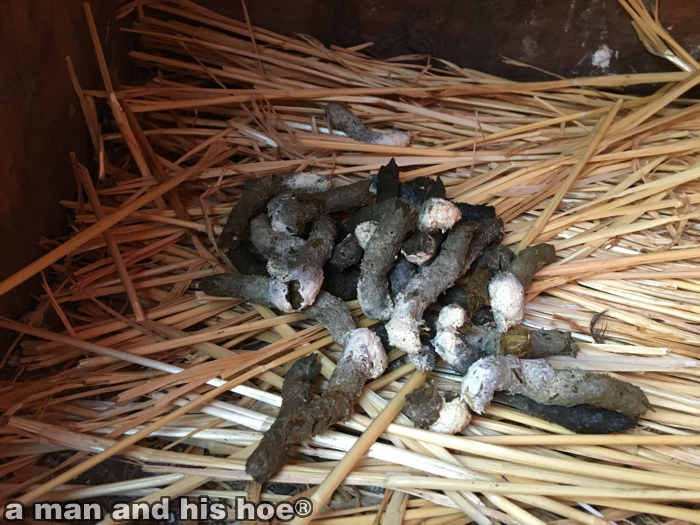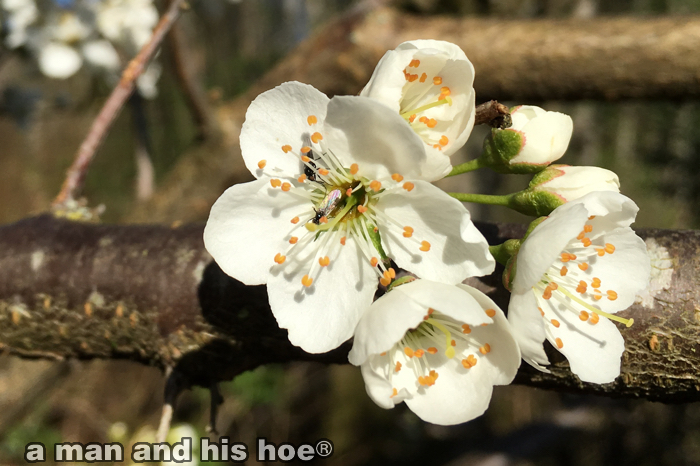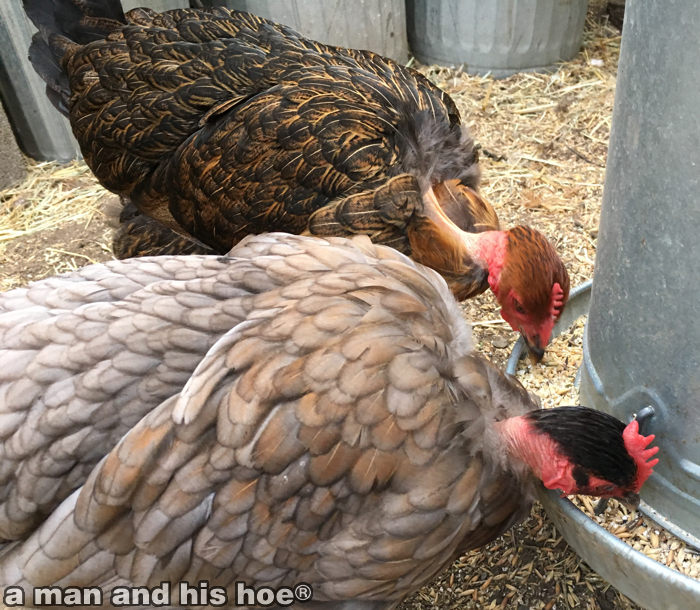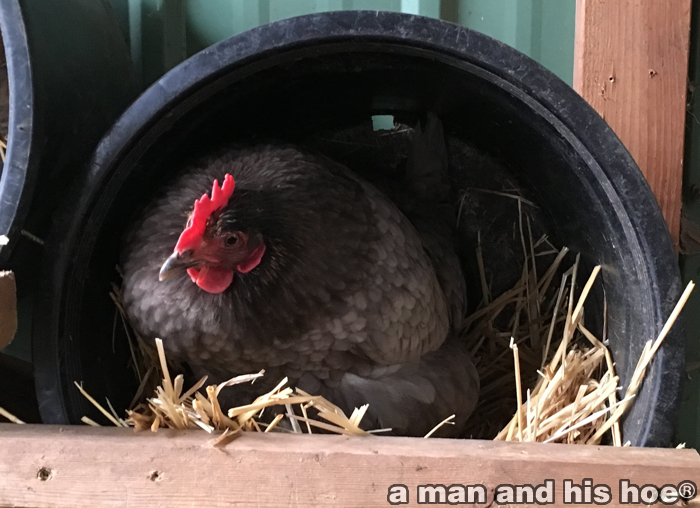
All the blossoms on the cherry tree are now open. On a sunny day like today, it’s a favorite spot for the bees. It would take one bee days to visit every flower on a tree like this. It makes you wonder if back at the hive they don’t have contests to see who can visit the most number of flowers on a single tree. Investigate closer, and some of the bees that buzz about might be keeping score to keep the competing bees honest.
“You did not visit 33,752 flowers on that tree because there are only 32,132 flowers on the whole tree!”
Or do they have certain honeycombs reserved for single source honey? “Yes, honeycomb 27 is all single sourced from the three hundred year old wild cherry on the other side of the pond. If you are coming from the gardens, use honeycombs 7 and 13.”
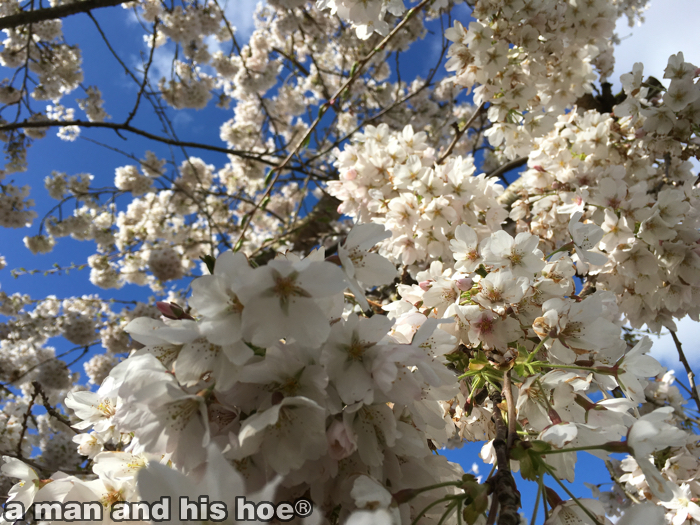
It’s odd to think that any honey you eat has gone through the stomachs of at least two bees. There is the worker bee who drinks the nectar from the flowers so the enzymes in its stomach can start processing the nectar into honey, and then regurgitates in the hive so a hive bee can eat it, process it some more in its stomach, before it regurgitates it in a honeycomb. And then the hive bees flap their wings like crazy to evaporite the water so the twice eaten, twice regurgitated (vomited) nectar can become the honey we humans like to eat. Almost makes you want to boil honey before eating it. Makes you wonder what delectable food products humans could make by upchucking and re-ingesting and upchucking food. Once something has been up and down the hatch a few times, it might not be bad. It works for bees. It could be a whole new way of cooking. Bee cuisine by humans. Call it Cuisine a la Anthophila and no one will be the wiser. Probiotics Plus?

Things are much quieter in the hoop house where some of the shallots and garlic are growing. With luck, some will be ready when Bow Little Market starts in June.
